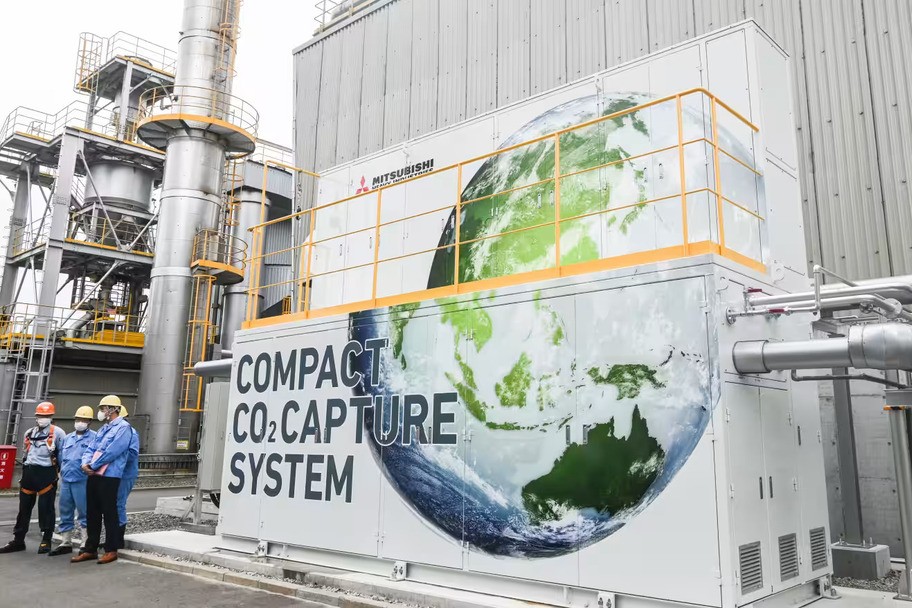Global Companies Lift Climate Targets as Emissions Progress Stalls: Accenture
A global Accenture review finds rising corporate ambition yet limited progress as few companies align actions with net-zero goals.
Only 16 percent of the world’s largest companies are on track to reach net-zero emissions in their operations by 2050, even as climate ambition continues to rise, Accenture said in its “Destination Net Zero 2025” report released on Tuesday.
These climate leaders account for just 4 percent of the group’s operational emissions, which shows a widening gap between expanding commitments and lagging results.
The report evaluated two company groups. The G2000 represents the 2,000 largest companies by revenue, while the G4000 top 4,000 companies worldwide. Accenture uses them to measure both ambition and real emissions progress.
Net-Zero Target Setting Accelerates Across Regions
The report analyzed the climate strategies, emissions trajectories and decarbonization actions of 4,000 of the world’s biggest public and private companies. It found that full value chain net-zero targets increased for the fourth year in a row.
Forty-one percent of the G2000 now cover Scopes 1, 2 and 3, up from 27 percent in 2021. While Scope 1 and 2 emissions focus on direct operations and purchased electricity, Scope 3 accounts for the bulk of the company’s footprint and includes supply chain and product use
Europe still leads on ambition, but Asia Pacific recorded the fastest annual gains, and North America reversed two years of decline.
“This data shows the momentum is real, but progress must accelerate,” said Stephanie Jamison, the lead author and Accenture’s global sustainability services lead. “Ambition alone will not close the gap. Companies need to embed climate action into how they run and grow.”
Companies Deploy More Practical Decarbonization Levers
The research says companies are shifting from commitments to action. Thirteen of 21 decarbonization levers were used by most of the G4000.
These levers include efficiency measures, renewable energy procurement, supply chain programs, fleet electrification, circularity and digital solutions. Average lever adoption among the G2000 rose 13 percent in a single year.
However, Accenture warns that breadth does not always guarantee emissions cuts. Several companies deploy many levers yet report rising emissions due to weak execution or misalignment with operational priorities.
Firms that choose the most material levers and scale them effectively tend to show the strongest declines.
“Leaders are stacking practical actions with discipline,” Jamison said. “They connect efficiency, renewables, digital tools and supply chain programs into systems that deliver measurable results.”
Revenue Growth Decouples From Emissions
One of the most significant findings is that corporate emissions and revenue growth have decoupled at scale. Since 2016, collective revenues among the world’s largest companies have grown 7 percent a year while operational emissions stayed flat. Three in four firms have reduced emissions intensity, and half have lowered absolute emissions.
“This proves that climate action and business performance go hand in hand,” Jamison said. “We see companies growing while lowering emissions. That is the model for the decade ahead.”
Heavy Emitters Still Lag Behind on Delivery
Despite rising ambition, heavy-emitting sectors remain slow to cut their footprints. Energy, natural resources and utilities account for 71 percent of operational emissions in the G4000.
Many companies in these sectors still report rising emissions because their processes are energy-intensive and infrastructure transitions remain slow.
Accenture says these sectors need shared solutions rather than isolated actions, given the high costs and risks. Industrial clusters, joint investments and coordinated supply chain programs could accelerate emissions reductions and help companies move closer to net-zero pathways.
Governance Gaps Undermine Emissions Cuts
Corporate governance remains inconsistent. While 73 percent of the G2000 have net zero targets covering at least Scopes 1 and 2, only 42 percent have detailed transition plans.
Companies that combine science-based targets, strong plans, board oversight and climate-linked executive pay cut emissions 2.6 percent a year. Firms that adopt none of these measures tend to see emissions rise more than 3 percent annually.
“The difference between leaders and laggards is clear,” Jamison said. “Good governance guides real delivery.”
Transparency Falls Short Despite Strong Business Cases
Eighty-nine percent of companies now frame decarbonization as a driver of business value, but transparency still trails. Only half disclose climate-related investments, and two-thirds do not report sustainable revenues. Accenture warns that this weakens investor trust and slows capital allocation to transition efforts.
Digitalization, especially AI, is emerging as a critical accelerator of decarbonization. About 24 percent of the world’s largest companies use AI to support emissions reduction. Adoption is highest among major emitters that rely on forecasting, optimization and real-time tracking to find efficiencies. Yet only 4 percent both deploy AI and report their own energy footprint.
“No company can solve this alone, especially in hard-to-abate sectors,” Jamison said. “Shared infrastructure, digital platforms and data partnerships will shape the next phase of decarbonization.”
The report concluded that the next decade will be defined by execution rather than ambition. Companies that combine technology, governance and verifiable business cases are likely to strengthen their advantage. Those that fall behind risk higher costs, weaker competitiveness and stricter regulatory pressure.
Also Read:
Global aluminum Industry Faces Rising Demand as Decarbonization Efforts Lag
Nirmal Menon
Related posts

Subscribe
Error: Contact form not found.


